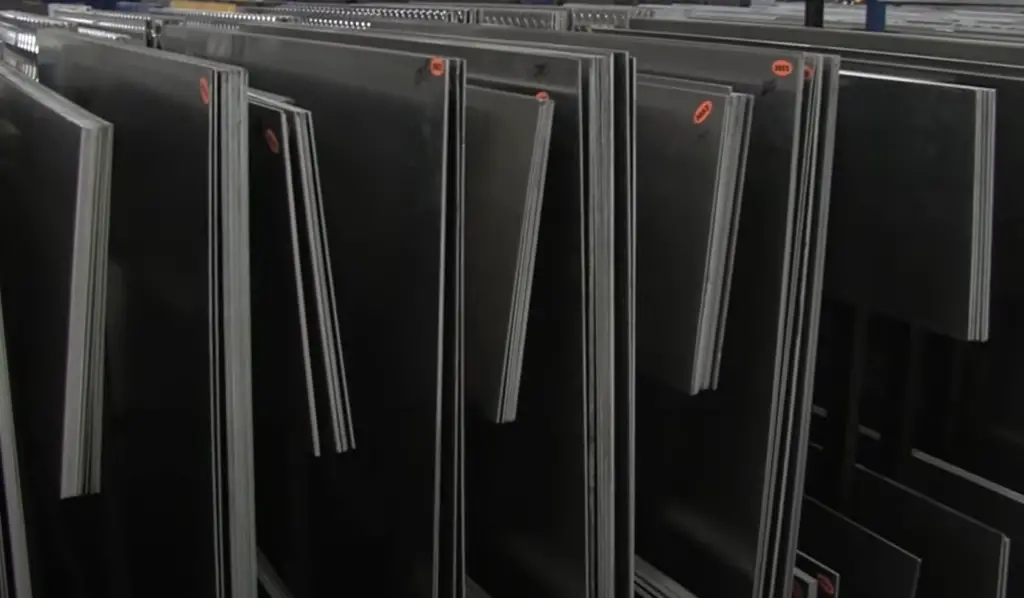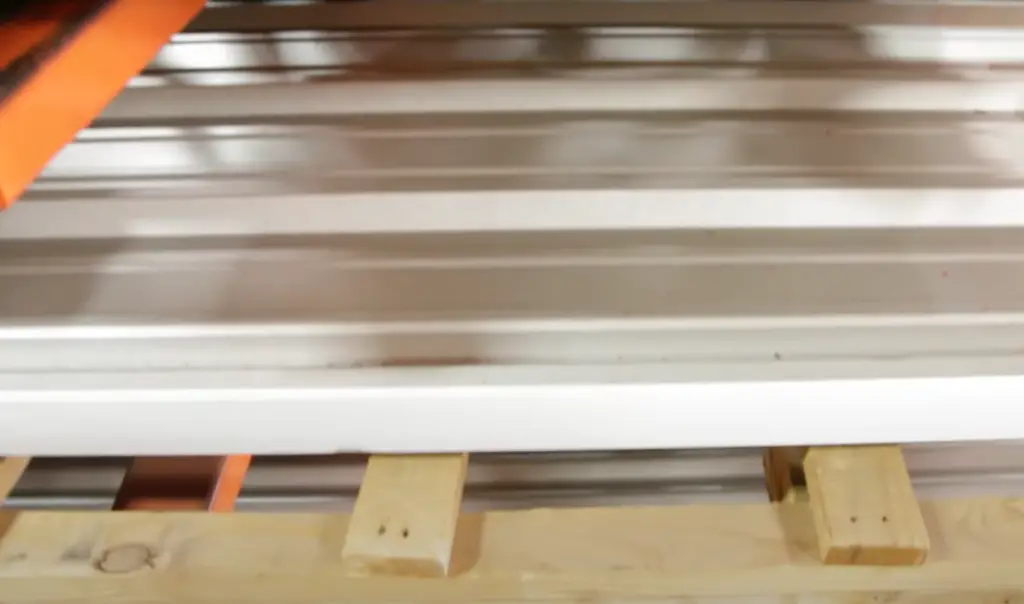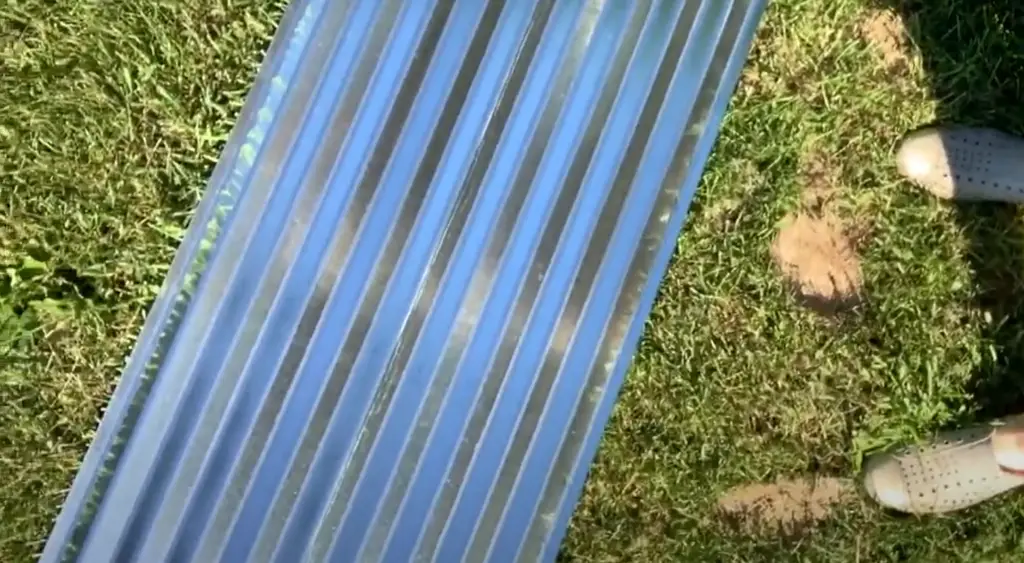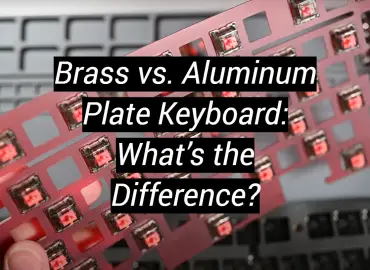Are you ever confused about the distinctions between aluminum and galvanized steel? Many are surprised to learn that although their purposes may be similar, there can be significant differences on how they’re produced and applied. Here we’ll attempt to break down exactly what distinguishes each type of metal so that you can make informed decisions in your applications and projects. Let’s start by exploring the characteristics, advantages, disadvantages, production methods, and applications of both metals.
What Is Galvanized Steel?
A layer of zinc coating is added to steel, which is known as galvanized steel. This coating helps protect the steel from corrosion and rust. The process of galvanizing steel involves cleaning the metal to remove any dirt, debris, or impurities. Then, the metal is subjected to an electric current which causes it to bond with the zinc coating. Lastly, the material is cooled and may sometimes be painted for extra protection.

The primary advantage of galvanized steel over aluminum is its superior strength and durability. Galvanized steel also offers excellent corrosion resistance due to its protective zinc coating. Additionally, due to its strength and malleability, galvanized steel can be used in a variety of different applications where aluminum may not be suitable.
What Is Aluminum Steel?
Aluminum steel is an alloy that includes aluminum and other elements. It has become increasingly popular due to its many advantages, such as being lightweight, corrosion-resistant, strong, durable, and inexpensive. Aluminum steel can be used in a variety of applications such as automotive components, machine parts, aircraft components, construction materials, and even in jewelry or decorative items.
The most common form of aluminum steel is known as cold rolled or hot rolled aluminum steel.
Hot rolled aluminum steel has been processed at temperatures above the critical point for annealing (around 900°F) and is usually left with a smoother surface finish. [1]Aluminum vs. Galvanized Steel: Differences
Aluminum and galvanized steel are popular construction materials due to their durability and cost-effectiveness. But which is better? Here’s a look at the differences between aluminum and galvanized steel:
- Durability: Al is more durable than galvanized steel because it is more corrosion-resistant. Aluminum also does not require additional treatments like painting or coating, making it a more cost-effective choice for projects that need long-lasting materials. Galvanized steel does have its own advantages though – it’s heavier than aluminum so can be used in larger projects with greater stability. Plus, galvanization helps the metal resist rusting from exposure to water, making it a better choice for outdoor structures.
- Cost: When it comes to cost, aluminum is usually the more affordable option. The material costs less to produce and requires minimal maintenance or treatments after installation. Galvanized steel tends to be more expensive due to its heavier weight and need for additional treatments like painting or coating. However, if you’re looking for a long-term solution that can withstand harsh weather conditions, galvanized steel may be worth the added cost.
- Weight: Aluminum is much lighter than galvanized steel – about one-third of the weight. This makes aluminum an ideal choice for lightweight projects such as framing and roofing. Additionally, aluminum has a higher strength-to-weight ratio than galvanized steel, allowing for fabrication into complex shapes without sacrificing structural integrity.

Overall, aluminum and galvanized steel have their own advantages and disadvantages depending on the project you are undertaking. Consider your needs to decide which material is right for you.
Pros and Cons of Aluminum Steel
One of the major differences between aluminum and galvanized steel is the cost. Generally, aluminum is more expensive than galvanized steel. However, this does not necessarily mean that one should be chosen over the other as each material has its own advantages and disadvantages.
Advantages of Aluminum Steel:
- Lightweight – Aluminum steel is much lighter than galvanized steel, making it easier to transport and install in projects.
- Low Maintenance – Because aluminum won’t rust or corrode like galvanized steel, it requires less maintenance and upkeep over time.
- Durable – Aluminum can withstand harsh climates better than galvanized steel due to its corrosion resistance. It’s also stronger and more rigid when exposed to extreme cold temperatures. [2]
Disadvantages of Aluminum Steel:
- Expensive – As mentioned, aluminum can be more costly than galvanized steel. This makes it less attractive for large projects, where keeping costs down is important.
- Less Rigid – Despite its strength and durability in extreme temperatures, aluminum is not as rigid as galvanized steel and may need to be reinforced with other materials for certain applications.
- Poor Conductivity – Aluminum does not conduct electricity or heat as well as galvanized steel, so it’s best used in non-electrical applications.
Overall, both aluminum and galvanized steel have their advantages and disadvantages that should be considered depending on the project at hand.
Pros and Cons of Galvanized Steel
Pros:
- Galvanized steel is coated with a layer of zinc, which protects it from rust and corrosion. This makes it an ideal material for outdoor projects or items that are exposed to moisture and other elements. It’s also fairly inexpensive compared to other corrosion-resistant metals.
- Galvanized steel is incredibly strong and durable. The zinc coating adds extra strength and rigidity, making it difficult to dent or bend the metal without extreme force.
- Galvanized steel has superior thermal performance, meaning it can withstand higher temperatures than aluminum without warping or deforming.
- The protective zinc coating makes galvanized steel resistant to chemicals, acids, salts, and oils which could otherwise corrode aluminum.

Cons:
- Galvanized steel can take longer to install as it’s heavier than aluminum and may require more specialized tools for assembly.
- The zinc coating adds extra weight to the metal, which could be a downside if you’re looking for something lightweight.
- Galvanized steel is generally more expensive than aluminum due to its protective coating.
- It also requires more maintenance as the zinc coating will eventually wear away over time, exposing the metal underneath to corrosion and rust unless it’s regularly repainted or treated with a protective sealant. [3]
Maintenance Tips for Aluminum Steel
Maintenance is key to making sure that aluminum steel lasts for many years. Here are some tips to help you keep your aluminum steel in good condition:
- Clean the surface regularly with a mild detergent and sponge. This will remove any dirt or debris that may have accumulated on the surface.
- Apply a protective coating such as wax, oil, or paint. This will protect against corrosion and rusting.
- Inspect the metal frequently for signs of wear and tear. If you notice any damage, repair it immediately to prevent further deterioration of the structure.
- Use stainless steel fasteners when attaching components to the aluminum steel structure. Stainless steel has a higher resistance to corrosion than other metals and will help prolong the life of your aluminum steel.
- When painting aluminum steel, use a rust-resistant primer and paint designed specifically for metal surfaces. This will ensure that the paint adheres properly to the surface and provides adequate protection from corrosion.
Following these maintenance tips can help you keep your aluminum steel in excellent condition for years to come!
Maintenance Tips for Galvanized Steel
Galvanized steel is popular for its durability and resistance to corrosion. However, this doesn’t mean that it won’t require any maintenance over time. Here are some tips for keeping your galvanized steel in optimal condition:
- Regularly clean the surface of the metal to remove dirt, dust, and other debris. This can help prevent rusting and ensure that the material stays looking great.
- Use a mild detergent or soap with warm water when cleaning galvanized steel surfaces to avoid damaging them more than necessary.
- Apply a coat of protective paint or sealant every few years to provide additional protection from moisture and other environmental factors that could cause damage over time.
- To prolong the life of galvanized steel, make sure to inspect it periodically for any signs of wear and tear or corrosion.
- If you need to repair any scratches or dents in galvanized steel, use a touch-up paint designed specifically for metal surfaces.

By following these easy maintenance tips and taking extra care of your galvanized steel materials, you can ensure that they look great and last for many years to come! [4]
Alternatives to Aluminum and Galvanized Steel
For those looking for an alternative to aluminum or galvanized steel, stainless steel offers a cost-effective and durable solution. Stainless steel is more expensive than other metals, but its resistance to corrosion and high tensile strength make it an ideal choice for applications that require superior performance. Additionally, stainless steel can be used in both indoor and outdoor environments because of its excellent weathering characteristics.
Another possible option is copper, although it’s not as strong or durable as aluminum or galvanized steel. Because copper has good heat conductivity, it’s often used in applications like cookware, radiators, air conditioning units, and heat exchangers. Although costly compared to other metals, the longevity of copper makes it a worthwhile investment because it rarely needs to be replaced.
Finally, titanium is another metal that can withstand the elements and is relatively lightweight.
Despite its considerable cost, titanium is a great option for those who want a metal that won’t rust or corrode over time.At the end of the day, choosing between aluminum vs galvanized steel depends on budget, application requirements, and environment. Each has their own benefits and drawbacks – so consider all factors before making any decision. Additionally, there are other alternatives available such as stainless steel, copper, and titanium which provide unique advantages depending on your project. Ultimately, the best metal for any application will depend on individual needs and preferences. [5]
Where to Use Aluminum Steel?
Aluminum is a versatile metal with excellent properties. It is lightweight, resistant to corrosion and rust, has high tensile strength, and can be easily formed into a variety of shapes. This makes it an ideal material for use in many applications, including window frames, boats, aircraft components, automobiles, appliances and more.

Galvanized steel is also very useful in a variety of applications. It is coated with zinc which makes it highly resistant to corrosion and rusting. This protective layer prevents steel from being attacked by weather elements at extreme temperatures or acidic environments. Galvanized steel is commonly used to construct buildings or bridges that are exposed to the elements like rain or snow as well as other structures such as fences and signs. It is also used in plumbing and electrical systems to protect against corrosion.
Where to Use Galvanized Steel?
Galvanized steel is most commonly used for outdoor applications due to its enhanced durability and corrosion resistance. Structures that benefit from galvanized steel include bridges, fences, sheds, sign posts, mailboxes, agricultural equipment, gutters, roofing materials and many more. It is also a popular choice for industrial projects such as warehouses or manufacturing facilities.
The zinc coating applied to galvanized steel helps protect it from the elements by preventing rust and corrosion. This makes it ideal for areas where moisture may be present, such as coastal environments or areas with high humidity levels. In addition to its durability benefits, galvanized steel can help reduce maintenance costs over time since it does not need to be repainted or treated on a regular basis like other materials. [6]
FAQ
Which is better: galvanized steel or aluminum?
Ultimately, the choice of material will depend on your project and intended use. Galvanized steel is a durable choice for outdoor applications such as fencing or roofing, as it forms a protective layer that helps prevent corrosion from occurring. Aluminum is lightweight and often used in projects where weight is an issue, such as window frames and gutters. It is also highly resistant to corrosion and offers good thermal conductivity.
Ultimately, both materials have their pros and cons depending on the application they are being used for.
What’s the average lifespan of galvanized steel?
The average lifespan of galvanized steel depends on the environment in which it is exposed to. Generally speaking, galvanized steel can last up to 20 years or more in outdoor environments with minimal corrosion. In harsher conditions, such as near a coastal area or in areas of high humidity, the lifespan may be shorter.

Can aluminum be galvanized?No, aluminum cannot be galvanized. Galvanizing is a process that involves coating metal with zinc to help protect it from corrosion. Aluminum does not react well to this process and thus cannot be galvanized. Instead, aluminum can oftentimes be anodized, which is a similar process that helps protect the metal from corrosion.
What’s the difference between hot-dipped and electro-galvanized steel?
Hot-dipped galvanizing and electro-galvanizing are two common ways of applying a protective layer of zinc to steel. Hot-dipped galvanizing involves dipping the steel into a bath of molten zinc, while electro-galvanizing involves using an electric current to apply a thin layer of zinc to the surface of the steel. Both methods help protect the steel from corrosion and have similar life spans when exposed to outdoor conditions. However, hot-dipped galvanized steel has greater corrosion resistance than electro-galvanized steel due to its thicker coating of protective zinc.
Can aluminum be painted?
Yes, aluminum can be painted with any type of paint designed for metal surfaces.
Sanding or applying a primer coat are both common ways of preparing an aluminum surface for painting. Additionally, special types of paint designed specifically for aluminum surfaces may also be used.What is the best way to clean galvanized steel?
The best way to clean galvanized steel is to use a mild soap and water solution with a nonabrasive cloth or brush. Avoid using harsh chemicals such as bleach or abrasives that could damage the protective zinc coating on the steel. To remove stubborn dirt and grime, you can use a vinegar and water solution or mineral spirits as long as they are not left on the surface for too long. After cleaning, rinse off any remaining cleaner with plenty of fresh water.
Can aluminum be welded?
Yes, aluminum can be welded using different welding methods such as MIG (metal inert gas) or TIG (tungsten inert gas). Additionally, aluminum can also be welded with oxy-fuel and resistance welding. It is important to select the appropriate type of welding method depending on the project at hand.
Can galvanized steel rust?
Yes, galvanized steel can rust over time if exposed to moisture or air for an extended period of time. The protective zinc coating on the steel helps prevent corrosion but will eventually wear off over time due to exposure and natural weathering. To help prolong the life of galvanized steel, it should be regularly inspected for signs of corrosion and kept clean and dry when possible.
How can you tell the difference between aluminum and galvanized steel?
The most obvious difference between aluminum and galvanized steel is the color. Aluminum has a silver-like hue, while galvanized steel has a grayish tint. This visual clue can help you identify which material you are dealing with before any other tests or measurements are conducted. In addition to their contrasting colors, there are other ways to distinguish between aluminum and galvanized steel. For example, the weight of each material is different; aluminum tends to be lighter than steel. This can make it easier to tell them apart without having to weigh them on a scale. You can also feel the texture of each one—aluminum typically feels smooth and cool compared to galvanized steel’s rough, matte finish. Finally, tapping two pieces of each material together produces a different sound; aluminum has a higher-pitched tone compared to steel’s deep, low pitch.
What lasts longer galvanized or aluminum?
The answer to this question will depend on the specific application and environment in which each metal is used. Generally speaking, galvanized steel has a longer life expectancy than aluminum in most outdoor applications. This is because galvanized steel is more resistant to corrosion, due to its added protective layer of zinc. Aluminum does not have this extra layer of protection, making it more susceptible to corroding when exposed to moisture or other elements. However, aluminum may last longer than galvanized steel in certain indoor applications where there is no risk of corrosion. Ultimately, both metals can be long-lasting if they are properly cared for and maintained.
Is aluminum considered galvanized?
No, aluminum is not considered galvanized. Galvanization is a process where metal is coated with zinc for protective purposes. Aluminum does not undergo this process and therefore cannot be classified as galvanized.
Useful Video: Aluminium vs Galvanised Trailer
Conclusion
In conclusion, aluminum and galvanized steel can both be used effectively in many applications. However, when it comes to corrosion resistance, strength, ductility and cost, there are clear distinctions between the two materials. Galvanized steel is a better option for those looking for increased durability and longevity while aluminum is best suited for those looking for lighter weight options or a more aesthetically pleasing look. Ultimately, the choice of which material to use will come down to personal preference and application requirements. When making this decision, it is important to understand the pros and cons of each material so that you can make an informed choice. By comparing these two metals side-by-side, you should find that one stands out as being the better option for your specific needs. Whichever material you choose, both aluminum and galvanized steel can provide a reliable solution for your project.
References:
- https://www.mststeel.com/difference-aluminum-galvanized-steel-2/
- https://blog.thepipingmart.com/metals/aluminium-vs-galvanized-steel-whats-the-difference/
- https://blog.containerexchanger.com/difference-galvanized-aluminum-metal-pallets/
- https://www.simplifiedbuilding.com/projects/aluminum-vs-steel
- https://kpsglobal.com/blog/comparing-aluminum-zinc-alloy-to-galvanized-metal/
- https://www.wenzelmetalspinning.com/steel-vs-aluminum.html






